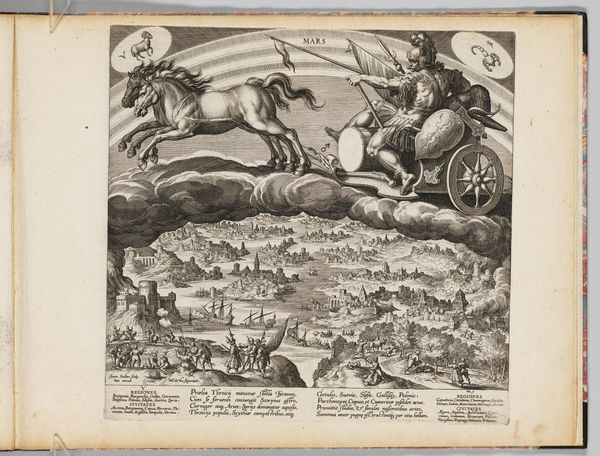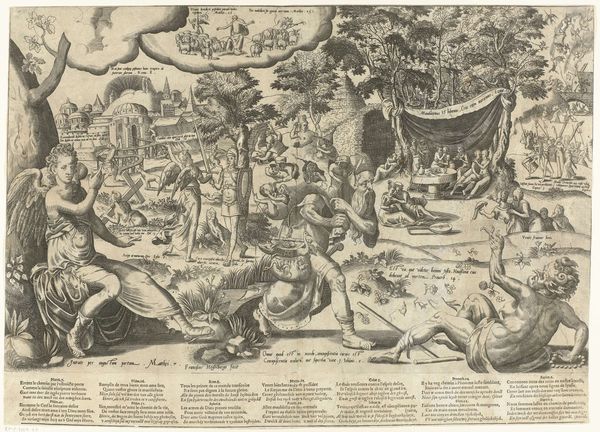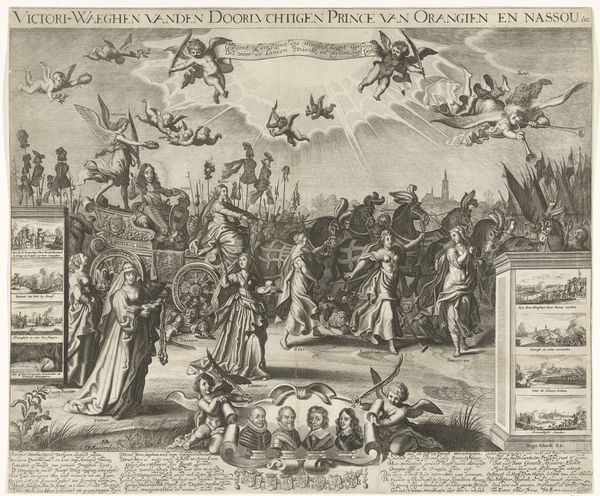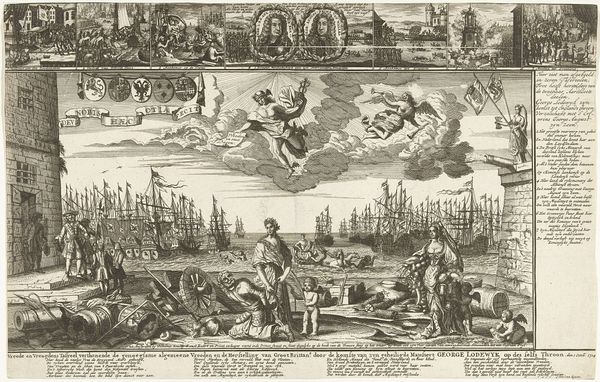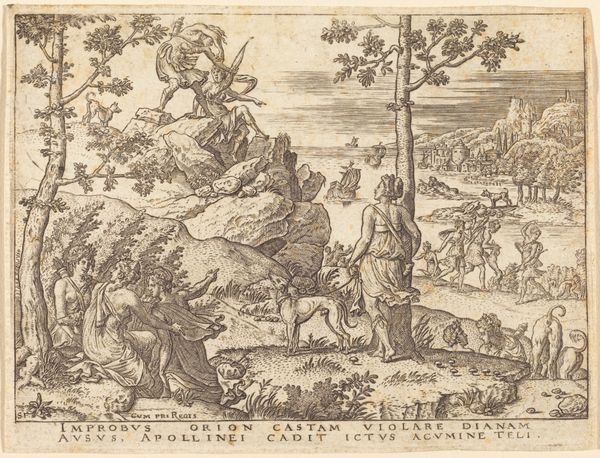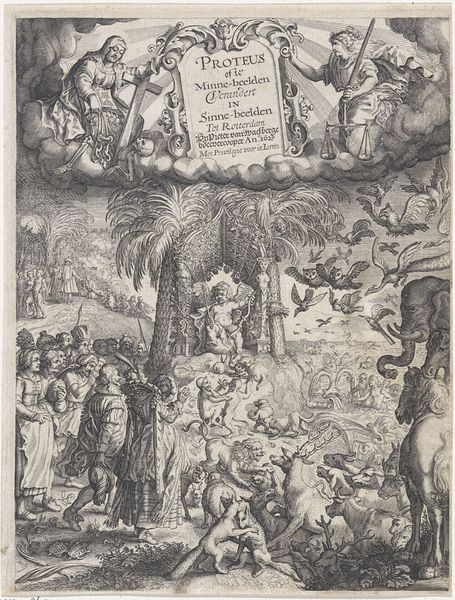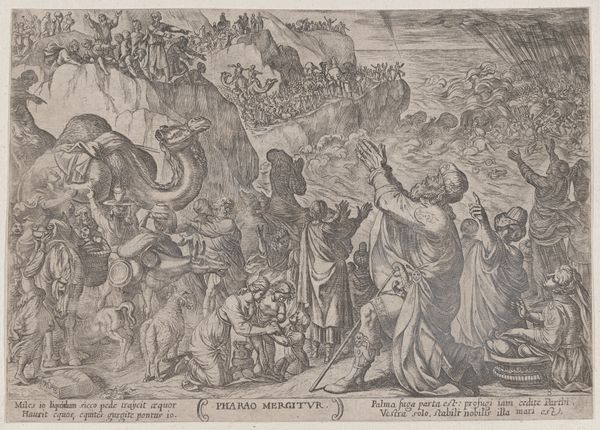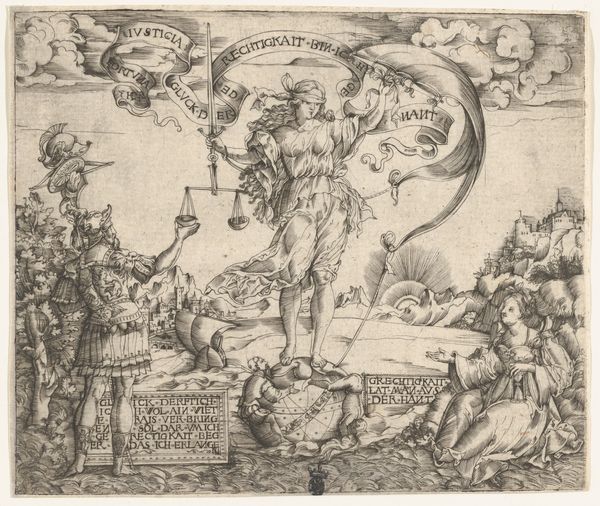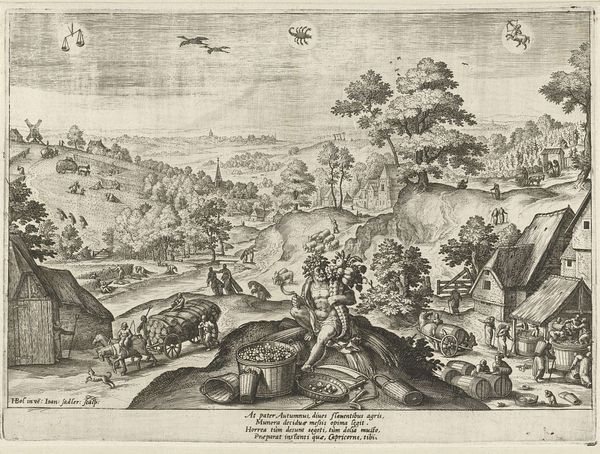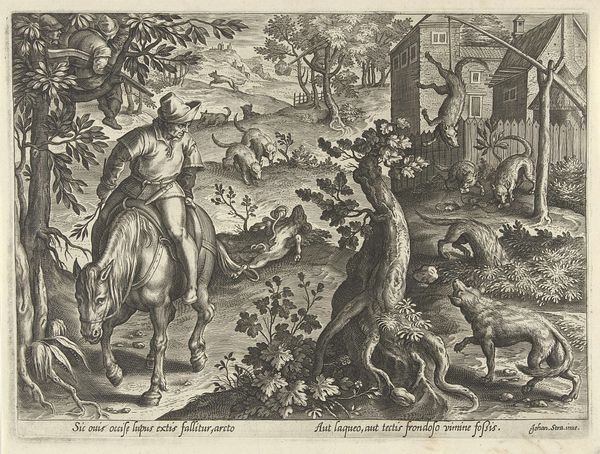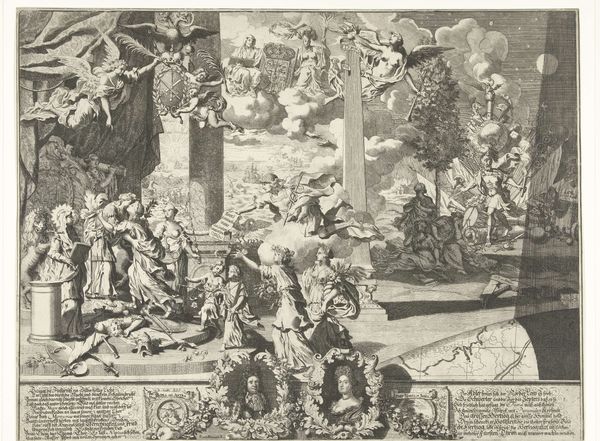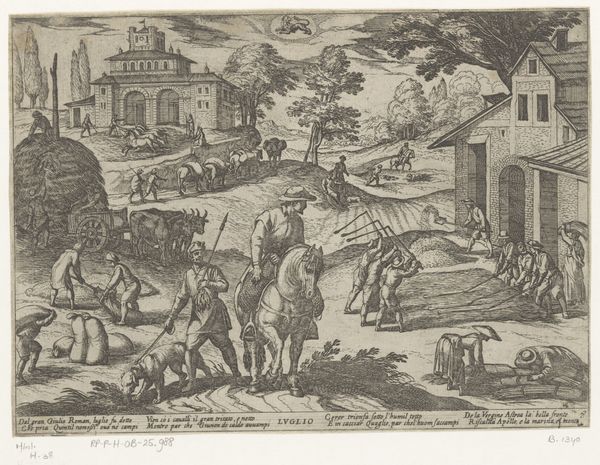
Overwinningen van koning Willem III in Ierland (bovenste helft), 1690 1690 - 1691
0:00
0:00
danieldelafeuille
Rijksmuseum
print, engraving
#
narrative-art
#
baroque
#
pen drawing
#
mechanical pen drawing
# print
#
pen illustration
#
pen sketch
#
old engraving style
#
landscape
#
figuration
#
form
#
personal sketchbook
#
pen-ink sketch
#
line
#
pen work
#
sketchbook drawing
#
cityscape
#
history-painting
#
sketchbook art
#
engraving
Dimensions: height 464 mm, width 590 mm
Copyright: Rijks Museum: Open Domain
Curator: This print by Daniel de Lafeuille, dating from 1690 to 1691, is titled *Overwinningen van koning Willem III in Ierland (bovenste helft), 1690*. It depicts King William III’s victories in Ireland. The piece is currently held at the Rijksmuseum. Editor: My initial reaction is one of structured chaos. There's a clear central composition, yet it’s overflowing with smaller vignettes and detailed ornamentation. The texture created by the engraving technique lends an almost feverish energy to the entire scene. Curator: Indeed. De Lafeuille employs the engraving medium to create a powerful statement about military prowess and national identity during a very turbulent time. Notice the careful placement of the scenes along the border: They frame and contextualize the central battle scene. Editor: It's a carefully constructed piece of propaganda, really. The central image glorifies William's forces in a triumphant manner. I see how each individual victory becomes part of a larger narrative, cementing the king’s image. It speaks volumes about the power of printed images at that time. Curator: I agree. The piece relies heavily on visual symbolism; the lions at the bottom represent strength and dominance, while the angel with the trumpet embodies the idea of divine approval of William’s actions. Editor: And that elaborate border does so much work to build a regal frame around an otherwise violent undertaking. You have leafy garland, ribbons, weapons all coexisting to reinforce that victory belongs with divinity. The decision to break up one primary event into smaller victories shows how war gets spun in smaller parts for the consumption of the people. Curator: The technique is also remarkable. The stark contrast between light and shadow generates a certain dynamism and almost cinematic feel, pushing and pulling the eye in different directions at once. Look closely at how lines cross hatch to generate deeper areas of shadow, giving solidity to both people and things in the depicted landscape. Editor: Thinking about how images like this circulated then... imagine the impact on public perception! It's such an intricate combination of visual artistry and political messaging designed to shape public opinion. I keep returning to this idea about it depicting victory—who tells this victory, how they're selling it—as a story. Curator: A powerful demonstration of image making for king and country indeed! I'm reminded just how strategically images were utilized to broadcast political and cultural messages during times of both celebration and conflict. Editor: Agreed. I’m fascinated by how such a meticulously crafted image was conceived for distribution, underscoring that visual media served as more than just artistic expression; they were essential components of a much wider public discourse.
Comments
No comments
Be the first to comment and join the conversation on the ultimate creative platform.
